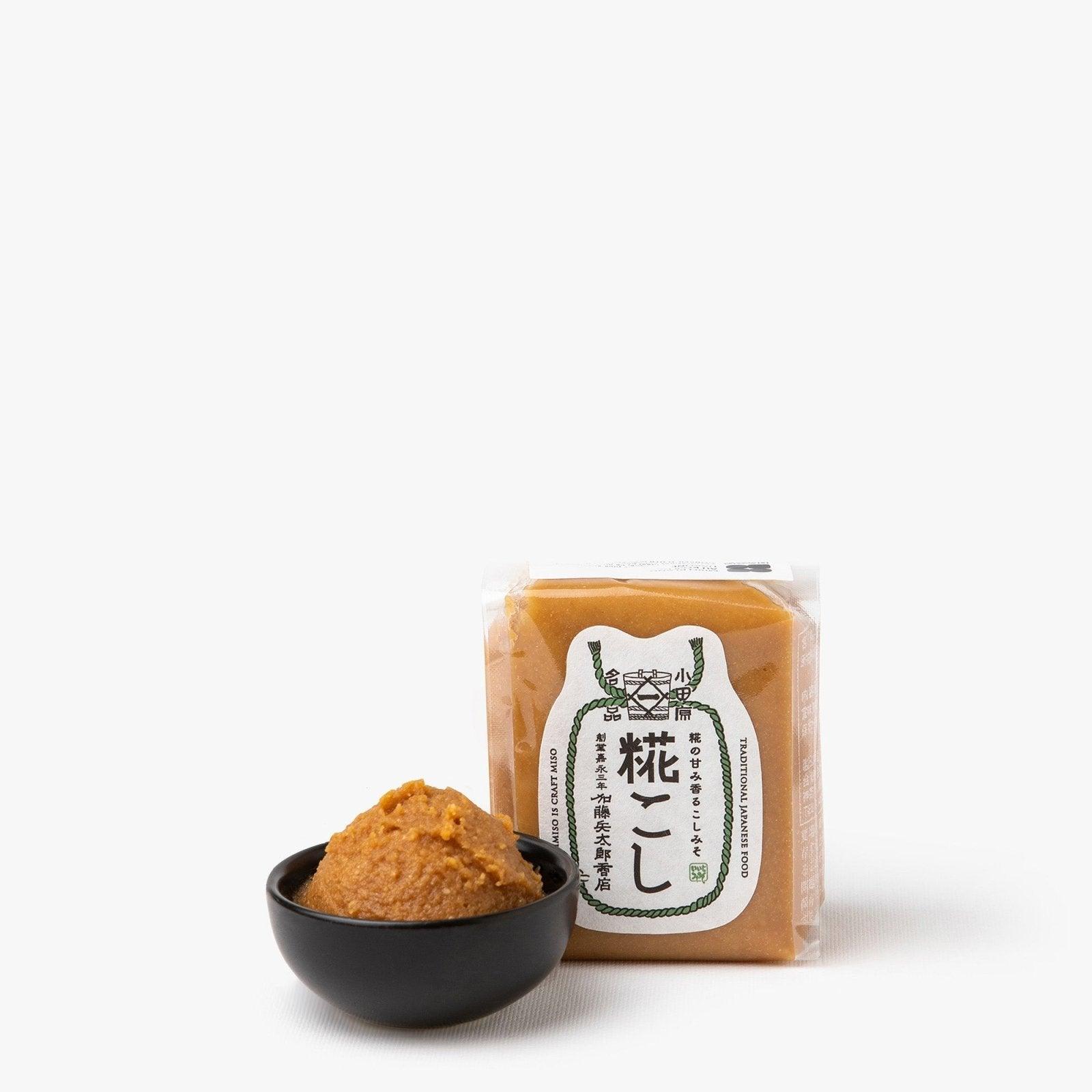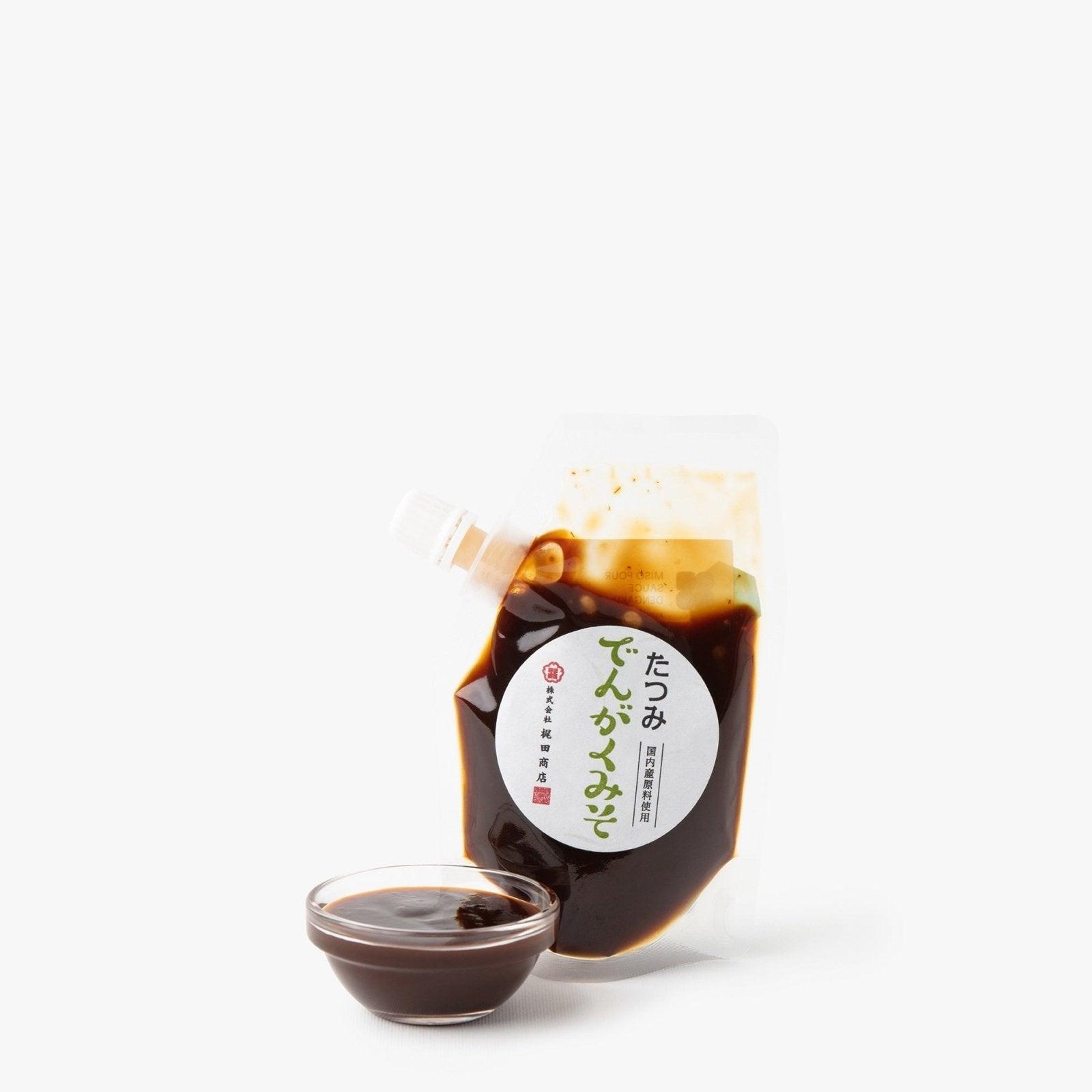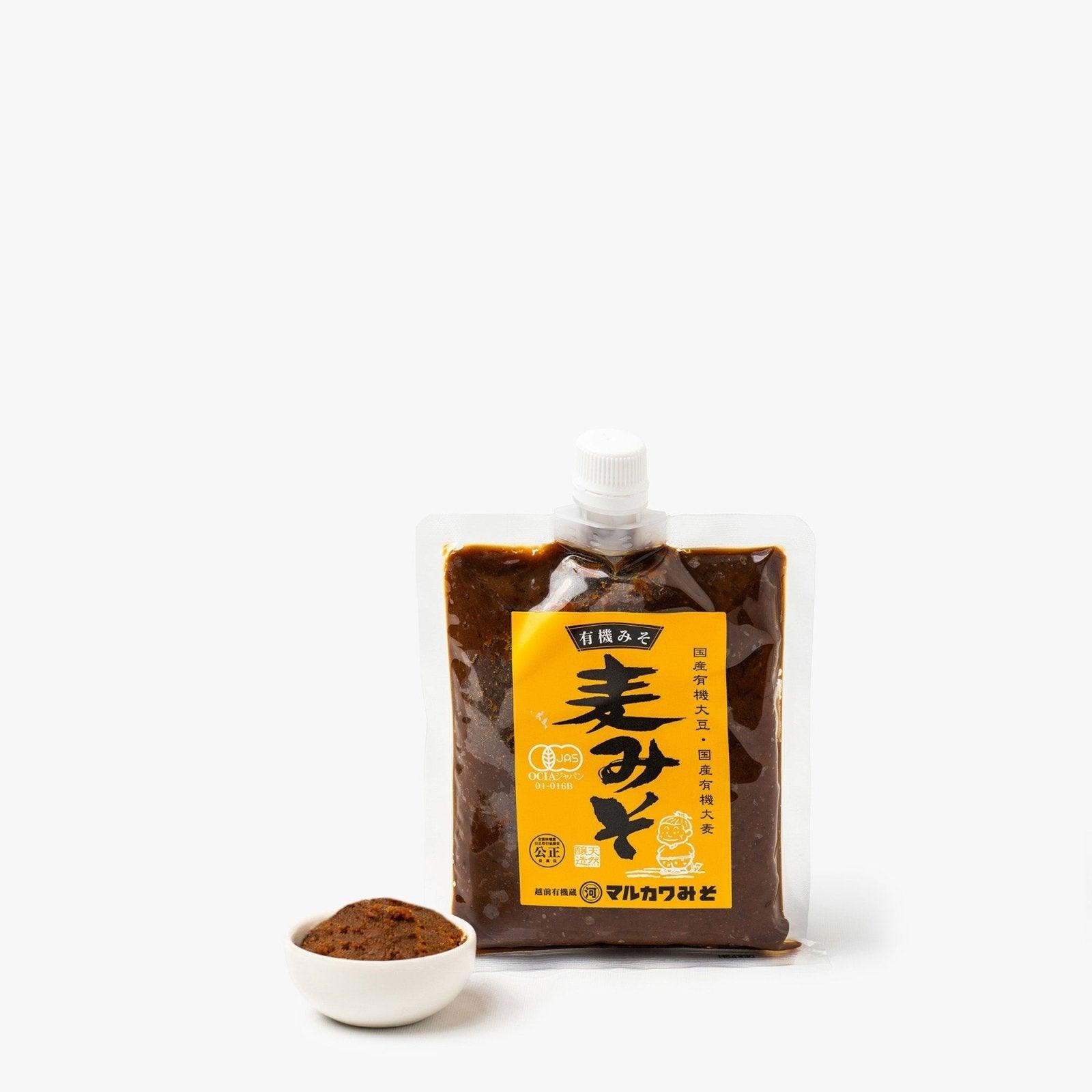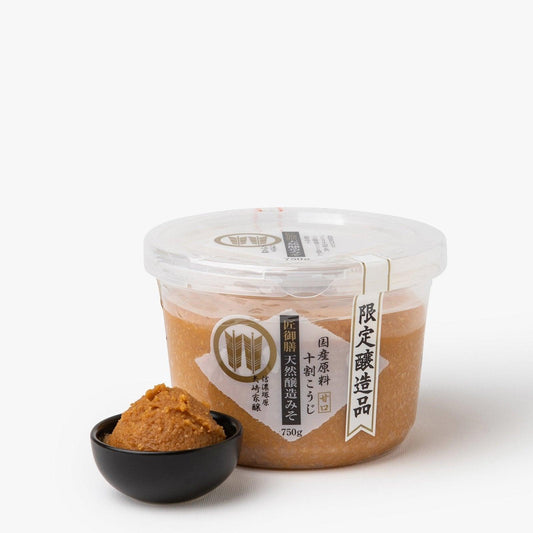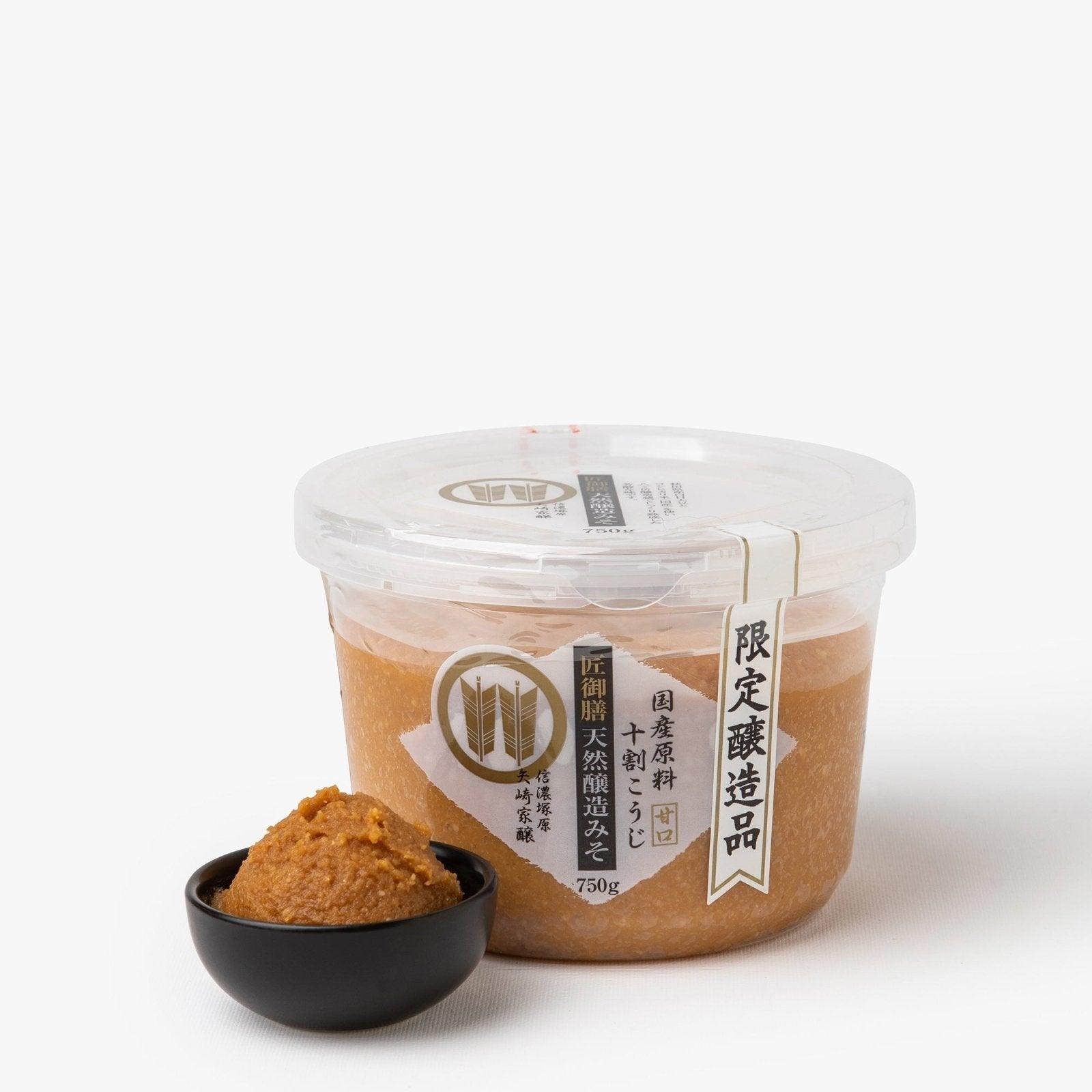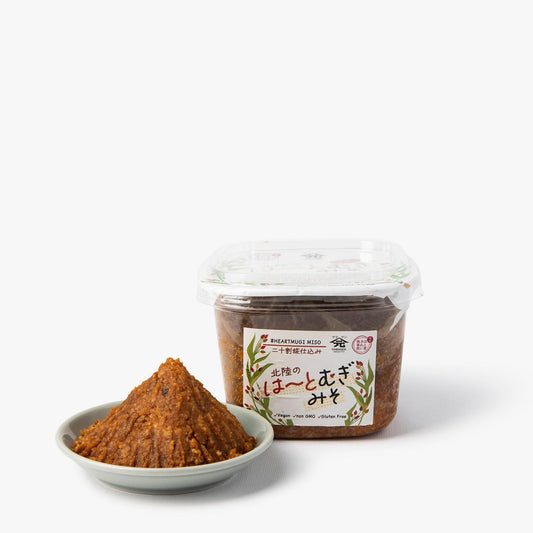Find out more about miso
How is miso paste made?
miso paste is a traditional Japanese ingredient made from fermented soybeans.
Preparation of ingredients:
Soya: Soya beans are cleaned and soaked in water for several hours, usually overnight.
Kōji: Rice, barley or soy inoculated with the fungus Aspergillus oryzae, essential for fermentation.
Cooking soybeans:
Soaked soybeans are steamed or boiled until tender.
Mix with kōji:
The cooked soybeans are cooled and then mixed with kōji and salt. The salt controls fermentation and prevents the growth of unwanted bacteria.
Fermentation:
The mixture is placed in barrels or vats for fermentation. Fermentation lasts from a few months to several years, depending on the type of miso desired.
Maturation:
During fermentation, miso develops its characteristic flavors. Temperature and humidity conditions are carefully controlled.
Refining:
After the fermentation period, miso is often refined to allow the flavors to develop further.
Packaging:
Mature miso is packaged and ready to use. The paste can be more or less smooth, and its color can vary from white to dark red, through brown tones.
What are the different types of miso?
Shiro miso (white miso): Short fermentation, mild taste. Perfect for light soups and vinaigrettes.
Aka miso (red miso): Longer fermentation, stronger, saltier taste. Ideal for rich dishes and robust sauces.
Mixed miso (awase miso): A blend of white and red miso, offering a balance of flavours.
Mugi Miso (barley miso): Mild flavor with hints of barley. Used for soups and marinades.
KomeMiso (rice miso): Based on soy and rice, with slower fermentation, offering a variety of flavors, from mild to salty.
Shinshu Miso (yellow miso): A miso with an intermediate taste, between white and red miso, very versatile for all kinds of dishes.
Tofu Miso (Tofu Miso): Smooth and creamy, often used in vegetarian sauces or light dishes.
How is miso paste used in Japanese cuisine?
Miso soup:
Traditional soup made with miso dissolved in dashi (fish stock) and often garnished with tofu, wakame seaweed and vegetables.
Sauces and marinades:
Used as a base for thick sauces or marinades for meat, fish and vegetables, often combined with mirin, sake and sugar.
Ramen:
A broth base for ramen, adding a depth of umami flavour.
Nabemono (simmered dishes):
A key ingredient in simmered dishes such as "miso nabe", where miso is dissolved in broth to enrich the flavor of the dish.
Dengaku:
Sweet miso sauce applied to grilled eggplant, tofu or other vegetables before grilling.
Yaki-miso:
A mixture of miso, sake, sugar and other ingredients, toasted on a stick or spatula.
Tsukemono (pickles):
Used to marinate vegetables to create tasty pickles.
Vegetable seasoning:
Mix with vinaigrettes or use as a dip for crudités.
Desserts and pastries:
Incorporate into sweet recipes, such as cookies or cakes, to add a salty, umami note.
How to keep miso fresh?
Refrigeration : Once opened, miso should always be kept refrigerated. It's best to store it in an airtight container to prevent odors from being absorbed and to preserve its flavors.
Avoid moisture: Make sure that the spoon or utensils used to serve miso are dry. Moisture can accelerate fermentation and alter miso quality.
Keep air out: Keep miso well covered and try to minimize exposure to air. You can also place plastic film directly on the surface of the miso before closing the container to prevent oxidation.
Use quickly: Although miso can last for several months in the refrigerator, it's best to use it within 3 to 6 months of opening to enjoy its full freshness.
Freezing (optional): If you don't use up all the miso quickly, you can also freeze it. Simply divide into small portions and store in a freezer bag or airtight container. Once frozen, it will keep for several months.













